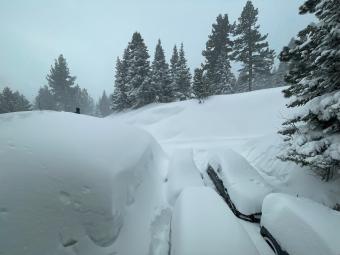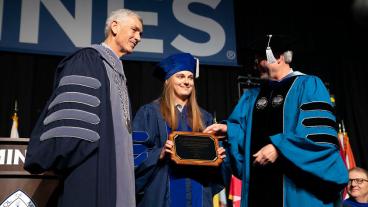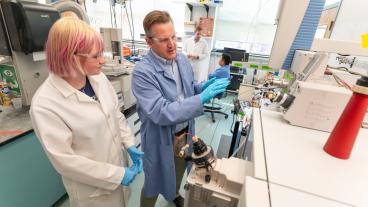Big snow years in western U.S. are being impacted by climate change – but less so than the average snow year

In 2023, California experienced a snow deluge estimated at a 1-in-54 year event, with 5 percent of snow monitoring stations hitting at least a 1-in-320 year event. (Photo courtesy of Christine Tran)
Much of the recent conversation around snow levels in the western U.S. has been focused on declining snowpack. But what does a warming climate mean for big snow years like the one California experienced in 2023?
A new study, led by a Colorado School of Mines researcher and published today in the Proceedings of the National Academy of Sciences, answers that question for the first time, using snow surveys, automated snow telemetry observations and modeled snowpack data from California’s Sierra Nevada, using 2023 as a case study.
Their findings show that the amount of snow that falls during so-called “snow deluge” years – a term coined by the authors to describe high snow years – is expected to decline with climate change, but not as much as it will in typical snow years.

“There’s a common narrative with climate change that extreme weather events are getting more extreme,” said Adrienne Marshall, lead author and assistant professor of geology and geological engineering at Colorado School of Mines. “But with snow deluge, we’re not seeing that’s the case. Instead, what we’re seeing across the western U.S. is that snow deluges decline, too.”
Specifically, the researchers project that the amount of snow during snow deluge years would decline by 58 percent by late century under a moderate warming scenario. The amount of snow that falls in an average year, however, is expected to decline even more, by 73 percent during the same time period and conditions.
In 2023, California experienced a snow deluge estimated at a 1-in-54 year event, with 5 percent of snow monitoring stations hitting at least a 1-in-320 year event.
Competing factors are at play when it comes to the impact of climate change on snow deluge years in the future, Marshall said. On one hand, warmer temperatures mean more precipitation will fall as rain, instead of snow. On the other hand, warmer air can hold more moisture, leading to more intense precipitation events.
“Should we expect our big snow years to stop happening? The answer we get here is, ‘Kind of.’ We expect them to get smaller but not quite as badly as our lowest snow years get smaller,” she said.
Even so, less snow during the heaviest snow years could have a serious impact on water resources and ecosystems, not just in California but across the western U.S.
“The infrastructure we’ve built and the ecosystems that have evolved have evolved in a world that has snow and not just rain. They're all adapted to that world,” Marshall said. “Snowpack acts as a massive reservoir that stores water for the summer when we need it most. When we lose that, we get runoff at a time of year when we don’t need it as much.”
“It brings up a lot of questions – how do we change? How do we manage the infrastructure and what we need to build? How will plants and animals respond?” she said.
Also contributing to the paper were John Abatzoglou of University of California, Merced; Stefan Rahimi of University of Wyoming; Dennis Lettenmaier and Alex Hall of University of California, Los Angeles.
Read the full paper, “California’s 2023 snow deluge: contextualizing an extreme snow year against future climate change,” at https://www.pnas.org/doi/10.1073/pnas.2320600121.




